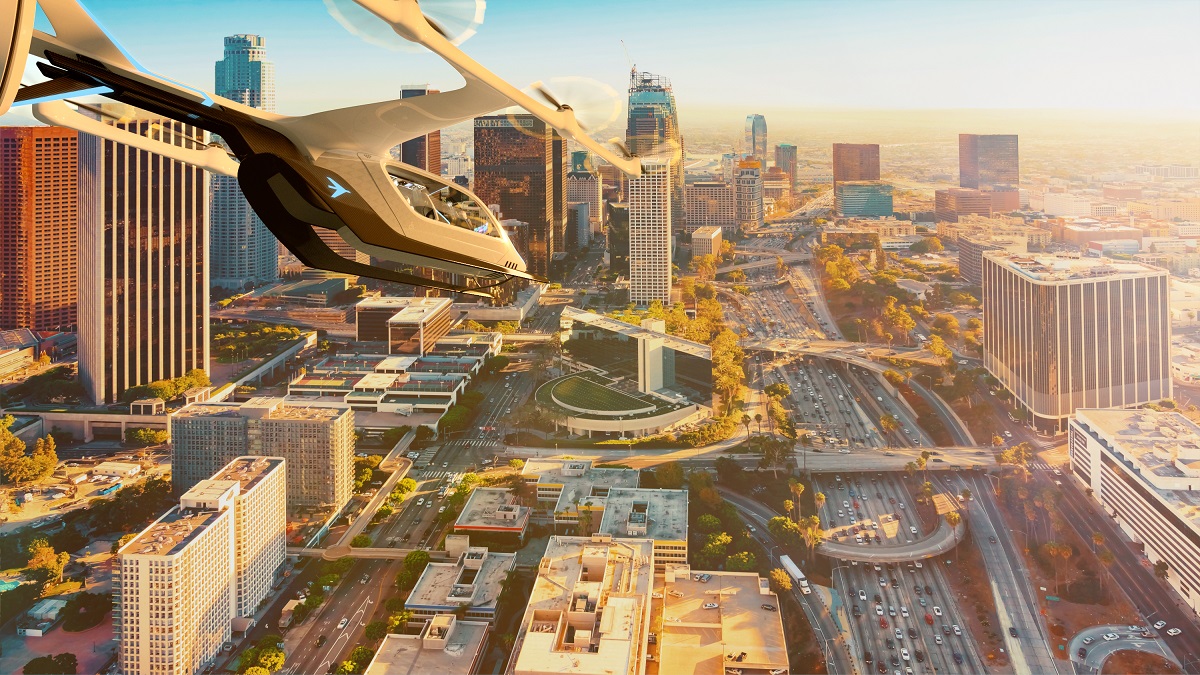
Embraer-X advocates unique traffic management systems tailored to each urban community. (Embraer)
Embraer has released a 48-page whitepaper on urban air traffic management, examining future infrastructure for air taxis.
The report, called Flight Plan 2030, was published by the company’s urban air mobility (UAM)-focused subsidiary, Embraer-X, in conjunction with fellow Embraer subsidiary Atech and radar-maker Harris. Flight Plan 2030 attempts to lay out the challenges that UAM pose to traditional air-traffic management systems over the next decade and provide a roadmap for navigating them.
“UAM flights have unique needs,” the report says. “They will take off and land from numerous skyports across a city. They will require smaller separation standards than those today to accommodate the anticipated high traffic volumes. They will carry passengers and goods, fly in closer proximity to buildings and other aircraft, rely more on data link rather than voice communications as eVTOLs [electric vertical-takeoff-and-landing vehicles] transition to autonomy, and operate in airspace adjacent to fixed-wing commercial aircraft. UAM flights will also spend most, if not all, of the duration of flights over densely populated areas, as they share airspace with traditional urban traffic such as helicopters and fixed-wing aircraft.”
Embraer-X draws a sharp distinction between the systems that will be used for air taxis and for drones, two new airspace entrants that are often grouped under the unmanned traffic management (UTM) umbrella.
“While UTM holds much potential for drone operations, gaps exist in its suitability for UAM flights,” the report says, partially because eVTOL vehicles are expected to launch with pilots onboard who will rely on voice communications, which the report says will not be supported by UTM. “There is also no authority that controls or maintains situation awareness of all sUAS operations in a given area, which makes this framework unsuitable for executing an integrated flow management plan.”
The full extent of UTM infrastructure and execution are still being determined, but the report says air taxis will need separate considerations from those given to small UAS.
In light of the companies’ envisioned need for a new system, which they call urban air traffic management, they propose federated systems tailored to the needs of the urban areas they serve. The report repeatedly highlights the importance of collaboration, bringing in stakeholders such as community members — who have concerns such as noise — and other airspace users to make decisions about the new urban ATM.
Under Embraer’s plan, airspace would be layered, with drone operations taking place near ground-level, UAM flight above that, above the tops of all but the tallest buildings, and traditional commercial flight taking place at still higher altitudes.

The urban air services provider would mimic traditional ANSPs, but serving UAM traffic exclusively. (Embraer)
“This layered approach enables the [air navigation service provider] to increase urban airspace capacity and provide equitable airspace access for new and legacy aircraft,” the report says. Critical points include the overlap between airspaces and times when an aircraft needs to pass through another’s airspace, such during as takeoff and landing.
While some countries will extend the role of service providers to cover UAM traffic, Embraer favors a new entity — an urban airspace service provider — exclusively in charge of all urban ATM, working with ANSPs and UAS service suppliers. The report compares the service provider’s job to that of traffic signs and streetlights on the ground, opening and closing flight routes as necessary, granting flight authorizations and ensuring “that all stakeholders have a consistent understanding of operating rules” to “keep traffic flowing, provide predictability, and mitigate safety risks.”

Want more eVTOL and air taxi news? Sign up for our brand new e-letter, “The Skyport,” where every other week you’ll find the most important analysis and insider scoops from the urban air mobility world.
With the number of air taxis that companies such as Uber — a partner of Embraer-X in the UAM space — plan to get into the air in the coming years, robust infrastructure and oversight will be necessary to ensure safe and smooth growth for the industry. There is work to do, especially in terms of certification, on the vehicle front, but most experts and insiders thing that is well in hand. Increasingly, the remaining issues to tackle are public acceptance and airspace integration, two challenges with somewhat-intertwined solutions. As stakeholders jockey for positioning in the new world order, Embraer has come to the table with a robust suggestion of its own.